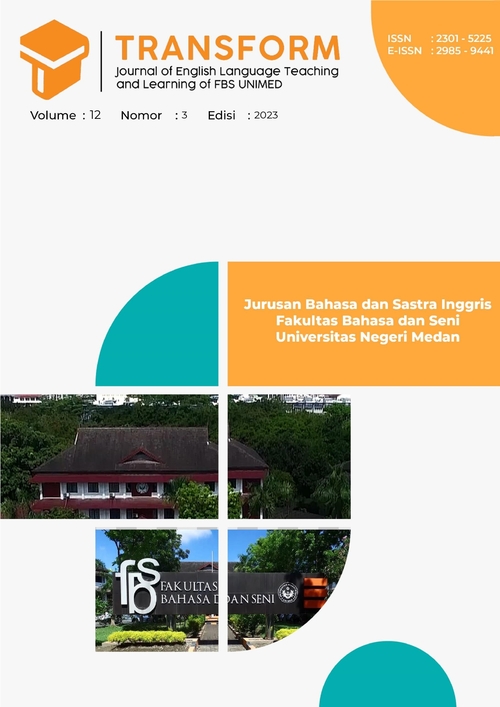Students™ Perceptions on The Use of Numbered Head Together Technique in Teaching Reading Comprehension
DOI:
https://doi.org/10.24114/tj.v12i3.52341Keywords:
Numbered Head Together, Reading Comprehension, Recount Text, Students’ PerceptionAbstract
The aim of this study was to find out students™ perceptions on the use of Numbered Head Together technique in teaching reading comprehension. The participants of the study were 30 students of Grade VIII SMP N 35 Medan. The data were analyzed by using descriptive qualitative. The data were collected by conducting observation, questionnaire, and interview. The questionnaire was designed based on Likert scale. The result of this study showed that most students gave positive response on the use of Numbered Head Together technique in teaching and learning reading comprehension process. There were only 9 students who gave negative response to the used of Numbered Head Together technique in teaching reading comprehension which could not help them in learning many reasons namely; they felt uncomfortable to learn in group discussion and they felt boring during the teaching and learning process. In short, the used of Numbered Head Together technique in teaching reading comprehension can motivate and attract them to be more enthusiastic in learning reading comprehension.Downloads
Published
2023-10-26
Issue
Section
Articles
License
Copyright (c) 2023 Eva Cristin Sipayung, Marisi Debora

This work is licensed under a Creative Commons Attribution-ShareAlike 4.0 International License.
Authors who publish with this journal agree with the following terms:
- Authors retain copyright and grant the journal right of first publication with the work simultaneously licensed under a Creative Commons Attribution License that allows others to share the work with an acknowledgment of the work's authorship and initial publication in this journal.
- Authors are able to enter into separate, additional contractual arrangements for the non-exclusive distribution of the journal's published version of the work (e.g., post it to an institutional repository or publish it in a book), with an acknowledgment of its initial publication in this journal.
- Authors are permitted and encouraged to post their work online (e.g., in institutional repositories or on their website) prior to and during the submission process, as it can lead to productive exchanges, as well as earlier and greater citation of published work (See The Effect of Open Access).
- This work is licensed under a Creative Commons Attribution-ShareAlike 4.0 International License.

This work is licensed under a Creative Commons Attribution-NonCommercial-ShareAlike 4.0 International License.



